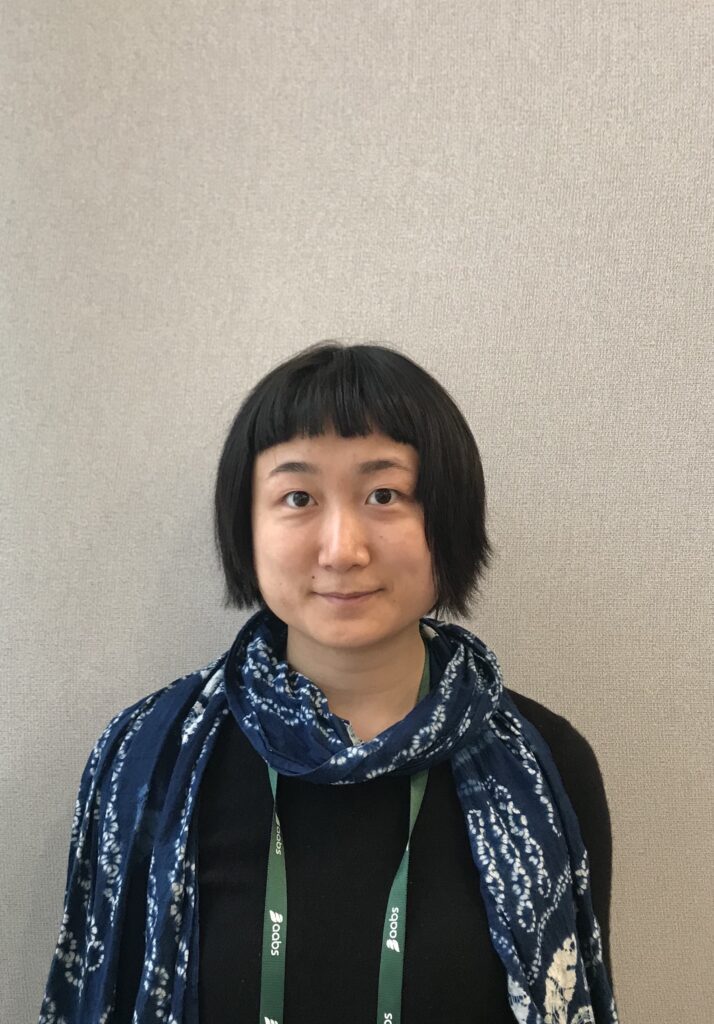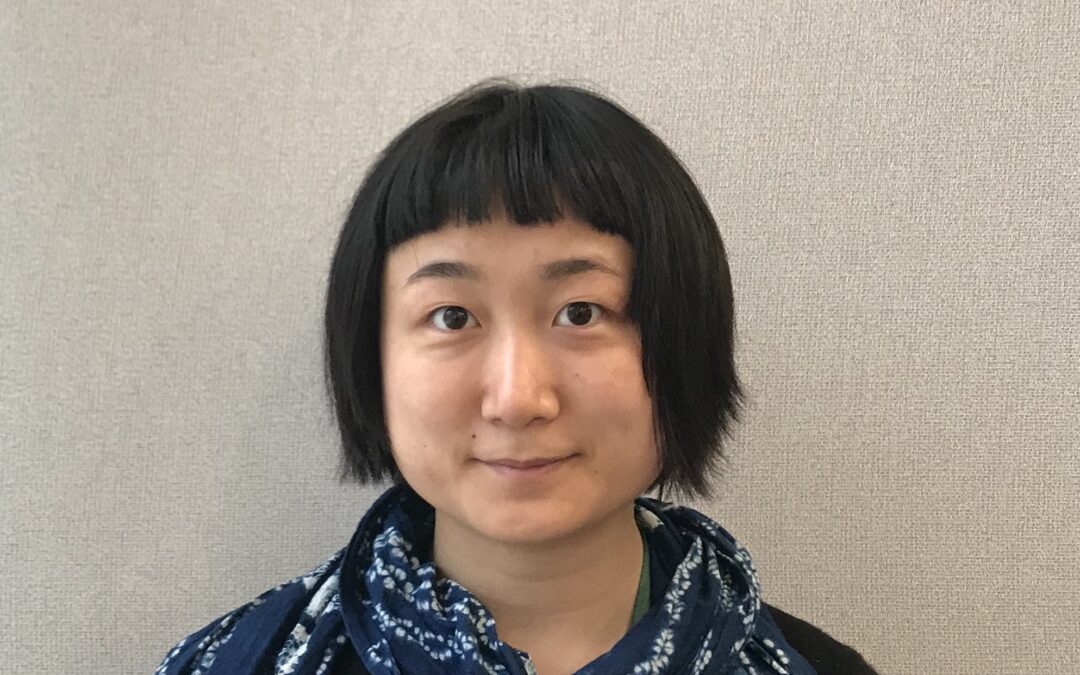Hundreds of people from all walks of life, attended the AABS 2022 conference in Seattle. Sophie Peng was one of them, attending her second AABS conference and, like all of us, her first in four years.
AABS met with Sophie during the conference to discuss her research, her experience at the conference, and her path in Baltic Studies. The transcript of our conversation has been edited for clarity and length.
AABS: Could you introduce yourself and your research?
Sophie Peng: I’m Sophie Peng, from Glasgow University, and I’ve been a member of the Association for the Advancement of Baltic Studies for maybe four or five years. I joined when I was a master’s student at Glasgow, and now I’m doing my PhD at the same institution.
My research at the moment is exclusively focused on Haapsalu lace, produced in Haapsalu, which is a seaside resort town in west Estonia, and Shetland lace, produced in Shetland– the northernmost part of the British isles. I’m comparing these two types of hand knitted woolen lace fabrics. By profession I call myself a textile historian, but I’m not doing any conservation work at the moment. I shall confess that despite having lace as my professional focus, I myself am not a very good lace-knitter. I can do some basic stitches, but definitely not very complicated ones.
My research is focused on the identity aspect, and life stories linked to lace. I explore how lace as a heritage craft has shaped the local identity. For example, for people in Shetland, specifically people from Unst, because they are famous for their finely knitted lace, and also people from Haapsalu in Estonia: How do they feel themselves being “special,” that is to say the local identity, via the heritage of lace-making in the region.

Sophie Peng at AABS 2022
AABS: What else are you enjoying at the conference, and what have you learned?
Sophie Peng: This is my first in-person conference since the pandemic, and I feel so lucky that this actually happened. I was supposed to present some of my primary findings at the 2020 conference in Charlotte, which didn’t happen — I was very sad! In 2018 I went to California for the AABS Stanford conference, and that conference gave me the chance to visit the US for the first time. I did enjoy the vibes of community and talking to like-minded people who know things, what’s going on, what’s new in the field. And you know, Baltic Studies is such a niche field, I always joke that in our field everybody knows everybody. This time, I met some people I befriended at earlier conferences, so it’s like a scholarly party with old friends. I think the conference is more about communication, and this is one thing — and I’m not saying Zoom conferences are bad — but this is one thing that Zoom conferences cannot offer you.
AABS: Tell us a little bit about your journey with Livonian.
Sophie Peng: I got to know Estonia and Haapsalu lace because I learned Estonian while I was in China; that was many years ago already. Language learning itself brought me so much. It’s kind of like opening a gate to the world; I didn’t know much about Estonia back then, and then from learning this complicated language as a hobby, I happen to have the privilege of understanding Estonian culture and Estonian people, and am finally here, doing research on Estonian heritage crafts as my profession.
For Livonian, I must have read something about it somewhere. I did my master’s with Erasmus Mundus, and back then, we had the course structure that was one year in Glasgow and one year somewhere in Europe: Poland, Estonia, or Hungary, if I remember right. Of course I chose Estonia, and I ended up studying at Tartu University. I was offered so many choices at Tartu. I was looking through a list of available courses, and I found Livonian.
My Livonian teacher was Miina Norvik; I met her at this conference as well. So I was there learning Livonian as a Chinese native speaker knowing just a little bit of Latvian and some Estonian. I was so confused, sitting in between my classmates who happen to be an Estonian Estonian-speaker and a Latvian Latvian-speaker! And you know, Livonian, if you see it historically, geographically, it makes sense that for Estonians and Latvians, it’s a bit easier to learn. One funny thing we would do is just keep guessing the vocabulary. I very much enjoyed the course. We learned Livonian folk songs, including one that was performed [at the Indigenous and Baltic Crossroads plenary by the University of Washington Chamber Singers]. And I could follow a little bit; I was so happy! Even though I can’t now say that I speak Livonian — after passing the exam many years ago, Livonian just kind of went away from my brain — but perhaps give me some time and I can figure it out.
I think this is the idea behind promoting and teaching smaller languages. It gives people, just random people from random places, a chance to know about very small groups of people. I myself grew up in a minority region in China—from my mother’s background we have these connections—I observed that in the past few years people started to post things in minority language on social media, like funny TikTok clips or folk songs on contemporary topics. I think this is an interesting way to attract an audience outside the local circle. You never know what will happen!
P.S. Sophie mentioned that she and her partner are planning to adopt a cat and teach the cat Livonian. Ku vȯņštõt! Good luck to them!

